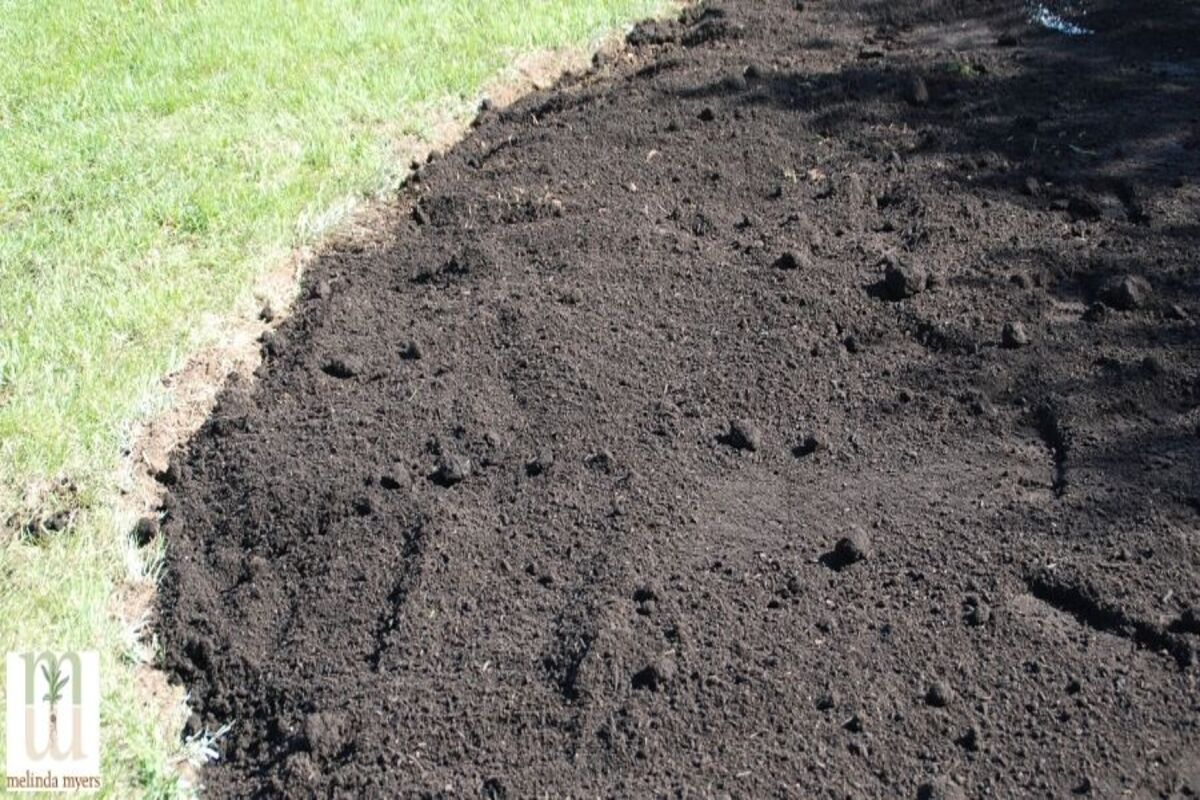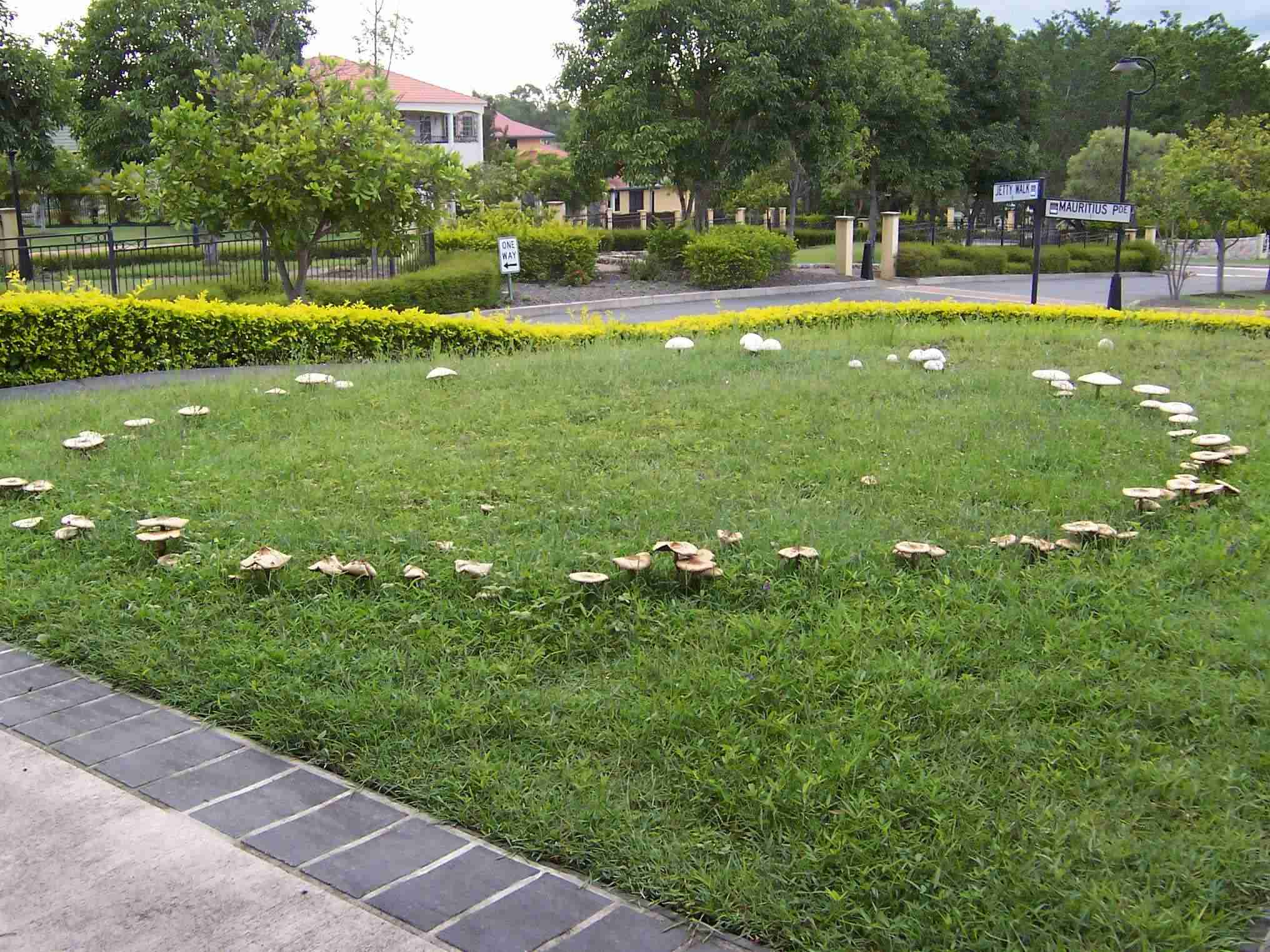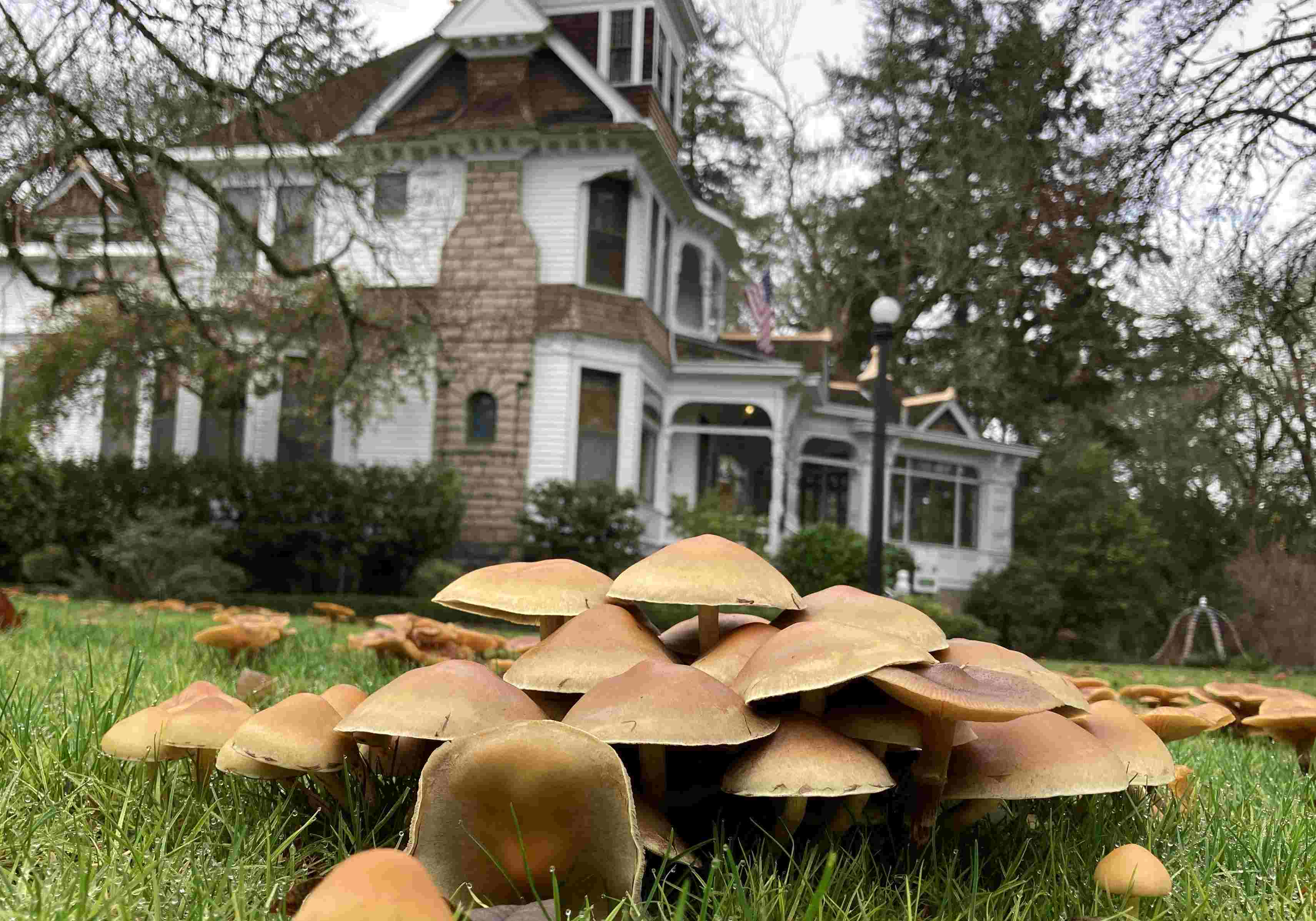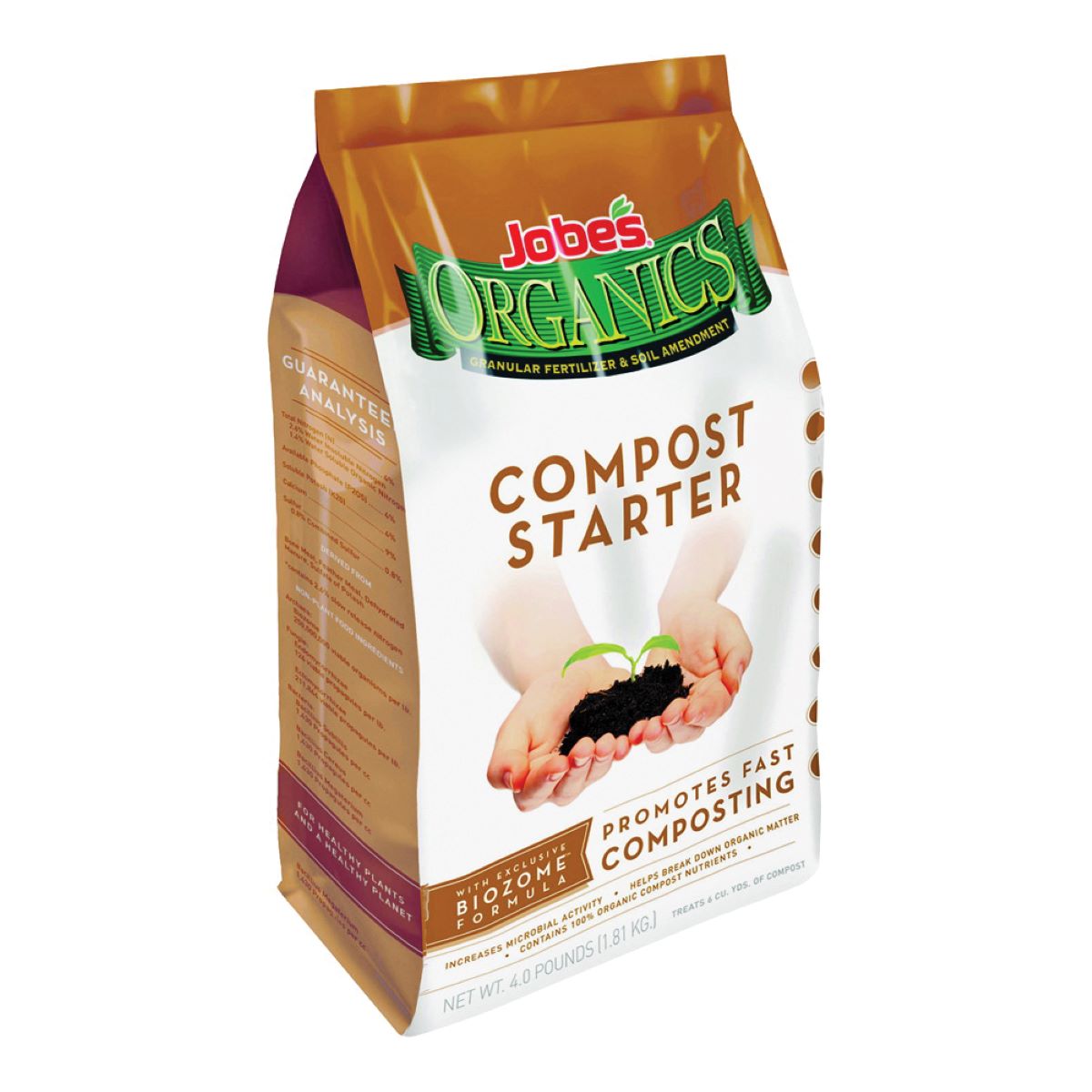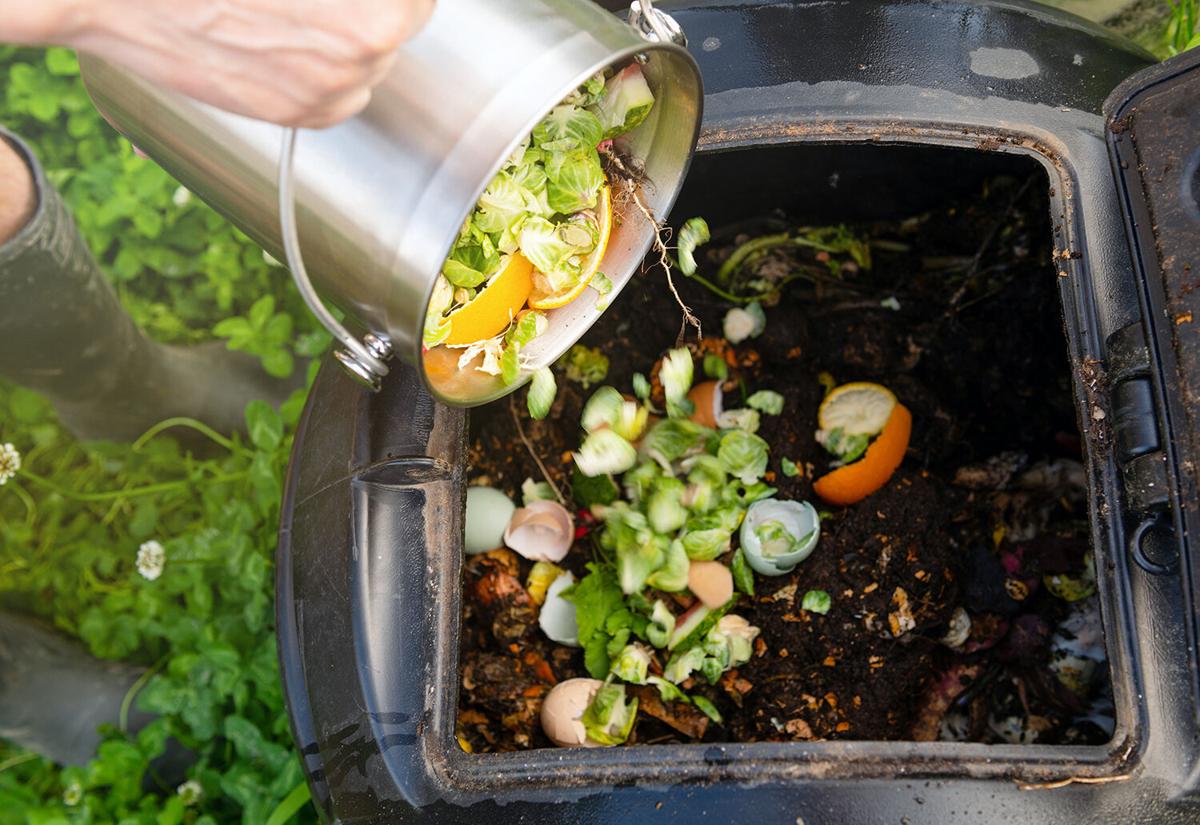Home>Gardening Tips and Tricks>Eco-Friendly Gardening>What Is In Mushroom Compost
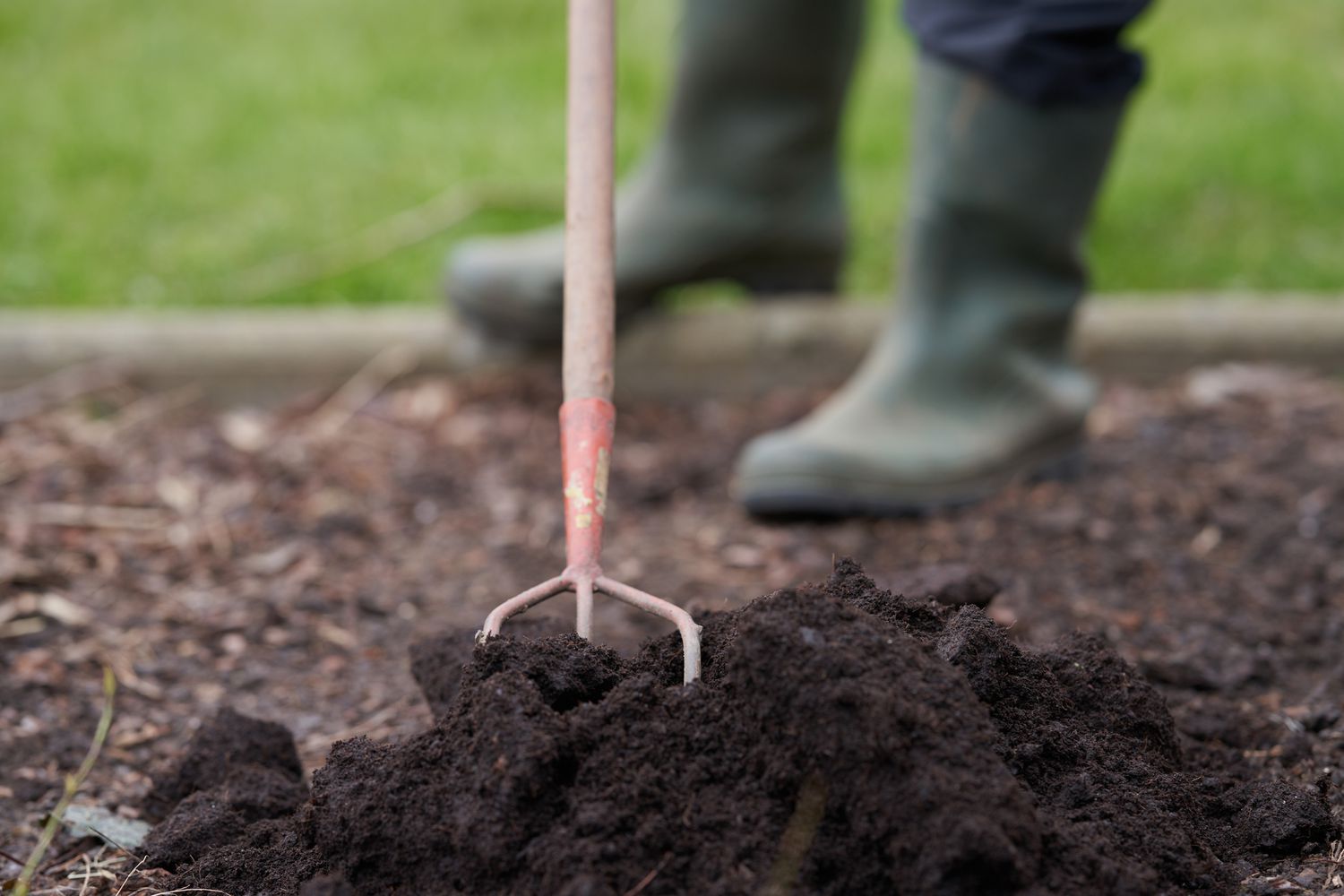

Eco-Friendly Gardening
What Is In Mushroom Compost
Modified: January 22, 2024
Discover the benefits of using mushroom compost for eco-friendly gardening. Enhance your soil's fertility and promote healthy plant growth with this organic and sustainable gardening solution.
(Many of the links in this article redirect to a specific reviewed product. Your purchase of these products through affiliate links helps to generate commission for Chicagolandgardening.com, at no extra cost. Learn more)
Table of Contents
Introduction
Welcome to the world of eco-friendly gardening! In this article, we will explore the fascinating topic of mushroom compost and how it can benefit your garden. If you are passionate about sustainable practices and want to create a thriving garden while reducing your environmental footprint, then mushroom compost is a fantastic option for you.
Mushroom compost, also known as mushroom soil or mushroom substrate, is a nutrient-rich fertilizer that is derived from the spent material left over from mushroom cultivation. It is a byproduct of the mushroom farming industry and has gained immense popularity among gardeners due to its numerous benefits for plant growth and soil health.
This organic material not only enriches the soil with essential nutrients but also improves its structure, moisture retention, and overall fertility. Whether you are a beginner gardener or an experienced green thumb, understanding the composition and uses of mushroom compost can help you unlock the full potential of your garden.
So, if you are ready to take your gardening game to the next level and contribute to a more sustainable planet, let’s dive into the world of mushroom compost and discover its wonders!
What Is Mushroom Compost?
Mushroom compost is a type of organic fertilizer that is created through the decomposition of various organic materials, such as straw, hay, horse manure, poultry litter, and other agricultural wastes. These materials are combined and then used as a substrate for growing mushrooms. After the mushrooms are harvested, the remaining material undergoes a composting process, resulting in nutrient-rich mushroom compost.
This compost is typically dark brown or black in color and has a crumbly texture. It is often described as having an earthy aroma, reminiscent of freshly tilled soil. The unique combination of organic materials used in the composting process contributes to its distinct composition and nutrient content.
Mushroom compost is packed with essential nutrients that are beneficial for plant growth. It contains a range of macronutrients, including nitrogen (N), phosphorus (P), and potassium (K), which are essential for plant development and overall health. Additionally, it is rich in micronutrients like calcium, magnesium, and zinc, that play a vital role in supporting various metabolic processes in plants.
One of the standout features of mushroom compost is its ability to improve soil structure. It enhances the soil’s water-holding capacity, preventing water runoff and allowing for efficient water absorption by plant roots. The compost also helps to break up compacted soil, allowing better aeration and root penetration.
Furthermore, mushroom compost acts as a natural slow-release fertilizer, providing a steady supply of nutrients to plants over an extended period. This slow-release nature helps reduce the risk of nutrient leaching and ensures that plants receive a consistent supply of essential elements for optimal growth.
Overall, mushroom compost is a valuable resource for gardeners seeking to enhance soil fertility, support healthy plant growth, and engage in eco-friendly gardening practices. Its nutrient-rich composition, ability to improve soil structure, and slow-release properties make it an excellent choice for promoting sustainable and thriving gardens.
The Composition of Mushroom Compost
Understanding the composition of mushroom compost is key to appreciating its unique properties and benefits. Mushroom compost is created through a carefully designed process that combines a variety of organic materials to create an optimal environment for mushroom cultivation. The resulting compost is a nutrient-rich mixture that provides excellent nourishment for plants.
The primary ingredients in mushroom compost include agricultural byproducts such as straw, hay, corn cobs, and cottonseed meal. These materials serve as the base for the compost and provide a source of organic matter and carbon. Organic matter is essential for maintaining soil fertility and improving its overall structure.
In addition to these base materials, mushroom compost may also contain other agricultural wastes like poultry litter, horse manure, and gypsum. These additional ingredients contribute valuable nutrients to the compost, including nitrogen, phosphorus, potassium, and trace elements. The presence of these nutrients ensures that plants receive a well-balanced diet for healthy growth.
During the composting process, the ingredients are mixed together and undergo a controlled decomposition process. This process is facilitated by the action of microorganisms, such as bacteria and fungi, which break down the organic matter and convert it into a more stable form. This decomposition process releases heat, which helps kill pathogens and weed seeds that may be present in the compost.
As the organic matter decomposes, it goes through various stages, starting from the active phase where heat is generated, followed by a cooling phase. The decomposition process allows for the breakdown of complex organic compounds into simpler forms that are more readily available for plant uptake.
The end result is a dark, crumbly compost with a balanced nutrient profile. It typically has a carbon-to-nitrogen (C:N) ratio around 30:1, which is ideal for supporting microbial activity and promoting nutrient cycling in the soil. This balanced ratio ensures that nitrogen is released slowly over time, minimizing the risk of nutrient loss through leaching.
Overall, the composition of mushroom compost is carefully designed to create an ideal growing medium for mushrooms while providing a nutrient-rich substrate for plant growth. Its blend of organic materials, nutrients, and microbial activity makes mushroom compost a valuable resource for gardeners looking to improve their soil fertility and promote the health and vitality of their plants.
Nutritional Benefits of Mushroom Compost
Mushroom compost offers a range of nutritional benefits that are incredibly valuable for plant growth and development. This nutrient-rich organic material serves as a natural fertilizer, providing plants with essential nutrients necessary for their health and vitality.
One of the key benefits of mushroom compost is its high nutrient content. It contains a balanced combination of macronutrients and micronutrients that are crucial for plant growth. The compost is particularly rich in nitrogen (N), phosphorus (P), and potassium (K), commonly known as NPK. These three macronutrients are essential for various aspects of plant development.
Nitrogen is vital for promoting foliage growth, including leaf production and chlorophyll synthesis. It plays a crucial role in enhancing the overall health and lushness of plants. Phosphorus is critical for root development, flower formation, and fruit production. It aids in energy transfer, DNA synthesis, and the formation of essential enzymes. Potassium helps regulate the overall functions of plants, including water movement, stomatal regulation, and protein synthesis.
In addition to macronutrients, mushroom compost also contains an array of micronutrients, including calcium, magnesium, iron, manganese, zinc, and copper. These trace elements are required by plants in smaller quantities but are equally important for various metabolic processes, enzyme activation, and overall plant health.
One of the notable attributes of mushroom compost is its slow-release nature. The nutrients in the compost are slowly broken down and released into the soil, providing a long-lasting supply of nourishment for plants. This characteristic helps prevent nutrient runoff and leaching, ensuring that plants can access these nutrients over an extended period.
Mushroom compost not only boosts the nutritional content of the soil but also enhances its overall structure and fertility. The organic matter in the compost helps improve soil aeration and drainage, which is crucial for developing strong and healthy roots. It also enhances the soil’s water-holding capacity, reducing water wastage and enhancing drought tolerance in plants.
Overall, the nutritional benefits of mushroom compost make it an exceptional choice for gardeners who want to provide their plants with a well-rounded and balanced diet. By incorporating mushroom compost into the soil, you can significantly enhance plant growth, improve soil fertility, and cultivate a vibrant and thriving garden.
How Is Mushroom Compost Made?
The process of making mushroom compost involves several steps to create the ideal growing medium for mushroom cultivation. While the exact methods may vary, the general process follows a structured approach that combines specific organic materials and creates the optimal conditions for mushroom growth.
1. Phase 1: Preparation
The first phase involves gathering and preparing the organic materials. Common ingredients include straw, hay, corn cobs, cottonseed meal, and agricultural byproducts. These materials are mixed together to create a balanced blend that provides the necessary nutrients and structure for the compost.
2. Phase 2: Conditioning
In this phase, the mixed organic materials are moistened and piled in windrows or containers. The piles are then carefully monitored for temperature, moisture levels, and turning frequency. This phase typically lasts for a few weeks, allowing for controlled decomposition to take place. During this time, heat is generated, which helps kill weed seeds and harmful pathogens present in the composting material.
3. Phase 3: Pasteurization
After the conditioning phase, the compost is transferred to a container or system for pasteurization. Pasteurization involves raising the temperature of the compost to a specific range, usually around 140 to 160 degrees Fahrenheit (60 to 70 degrees Celsius). This process further sterilizes the compost, eliminating any remaining pathogens or unwanted organisms.
4. Phase 4: Mushroom Spawning
In this phase, the pasteurized compost is inoculated with mushroom spawn. Mushroom spawn consists of a substrate that is colonized with the mycelium of the desired mushroom species. The spawn is evenly distributed throughout the compost and mixed thoroughly to ensure proper colonization.
5. Phase 5: Incubation
During the incubation phase, the compost is kept in a controlled environment with specific temperature and humidity conditions. This allows the mushroom mycelium to grow and spread throughout the compost. The mycelium networks and consumes the nutrients present in the compost, preparing the substrate for mushroom fruiting.
6. Phase 6: Fruiting
Once the mycelium has fully colonized the compost, the environment is adjusted to trigger the fruiting process. This typically involves reducing the temperature, increasing humidity, and providing adequate light. Mushrooms begin to emerge from the compost, and they can be harvested at the appropriate stage of development.
The process of making mushroom compost requires careful monitoring, attention to detail, and adherence to specific parameters. It is a combination of scientific knowledge, experience, and skill to create the optimal conditions for successful mushroom cultivation. The resulting compost is not only excellent for growing mushrooms, but it also provides valuable organic matter and nutrients that can benefit plants in gardens and farming operations.
The Uses of Mushroom Compost
Mushroom compost is a versatile organic material that can be used in various ways to benefit your garden and plants. Its nutrient-rich composition and soil-enhancing properties make it an excellent resource for promoting healthy plant growth and improving overall soil fertility.
1. Soil Amendment
Mushroom compost can be used as a soil amendment to enrich garden beds, flower pots, and raised beds. It improves soil structure, enhances moisture retention, and promotes aeration. By incorporating mushroom compost into the soil, you provide valuable organic matter and a wide range of nutrients that support plant growth and development.
2. Potting Mix Component
When mixed with other growing media, such as peat moss, coconut coir, or vermiculite, mushroom compost can create an excellent potting mix. This mix provides a well-balanced substrate that retains moisture, allows for good drainage, and delivers essential nutrients to potted plants.
3. Mulch
Mushroom compost can serve as a natural mulch to suppress weeds, conserve moisture, and regulate soil temperature. Applying a layer of compost around the base of plants helps prevent weed growth, insulates the soil, and reduces evaporation, thereby conserving water and promoting healthier plant growth.
4. Compost Tea Ingredient
Mushroom compost can be used as an ingredient in compost tea, a liquid fertilizer made by steeping compost in water. Adding mushroom compost to compost tea enhances its nutrient content and microbial diversity. Compost tea can be applied directly to plants as a foliar spray or used to irrigate the soil, providing a nutrient boost to promote plant health.
5. Vegetable Gardens and Flower Beds
Mushroom compost is particularly beneficial for vegetable gardens and flower beds, where plants require a nutrient-rich soil to thrive. Adding mushroom compost to these areas helps ensure that plants receive an ample supply of essential nutrients, promoting healthy growth, and increasing yield and flower production.
6. Lawn Renovation
If you are renovating your lawn or establishing a new one, incorporating mushroom compost into the soil can greatly benefit the grass. It improves the soil’s structure, enhances root growth, and contributes to overall lawn health and vigor.
Using mushroom compost aligns with the principles of Sustainable Landscaping. By diverting organic waste from landfills and effectively recycling it into a beneficial soil amendment, you contribute to reducing waste and minimize the need for synthetic fertilizers, pesticides, and herbicides.
Overall, the uses of mushroom compost are diverse and beneficial for various gardening applications. Whether you are growing vegetables, flowers, or maintaining your lawn, incorporating mushroom compost into your gardening routine can be a game-changer in promoting healthy plants, fertile soil, and sustainable gardening practices.
Common Misconceptions about Mushroom Compost
While mushroom compost offers numerous benefits for gardens and plants, there are some common misconceptions that surround its use. It’s important to address these misconceptions to have a better understanding of mushroom compost and its role in gardening.
1. It contains harmful chemicals:
One misconception is that mushroom compost contains harmful chemicals or pesticides that can be detrimental to plants and the environment. However, commercially produced mushroom compost undergoes a thorough process that includes composting and pasteurization, which effectively kills harmful pathogens and weed seeds. As a result, the final product is free from harmful chemicals and safe to use in gardens.
2. It is too acidic for plants:
Another misconception is that mushroom compost is too acidic for most plants, making it unsuitable as a soil amendment. While it is true that mushroom compost can have slightly acidic properties, the composting process helps neutralize the acidity over time. Additionally, the acidifying effect can be balanced out by incorporating the compost with other soil amendments or adjusting the pH levels as required for specific plants.
3. It attracts pests:
Some gardeners worry that using mushroom compost will attract pests such as mushrooms gnats or flies. However, proper composting and pasteurization processes eliminate pests, larvae, and eggs that could be present in the organic materials used to create the compost. As long as the compost is properly cured and stored, there should be minimal risk of attracting pests.
4. It can be used as a standalone growing medium:
Contrary to popular belief, mushroom compost is not suitable as a standalone growing medium for plants. It is primarily used as a soil amendment or blended with other ingredients to create a well-balanced potting mix. The compost provides essential nutrients and improves soil structure, but it lacks the necessary qualities such as good drainage and air circulation when used alone.
5. It is only suitable for mushroom cultivation:
While mushroom compost is indeed used as a substrate for growing mushrooms, its applications go beyond mushroom cultivation. The nutrient content, organic matter, and soil conditioning properties of mushroom compost make it a valuable resource for promoting plant growth, improving soil fertility, and enhancing the overall health of plants in a wide range of gardening practices.
By dispelling these common misconceptions, we can fully appreciate the benefits and potential of mushroom compost as a valuable tool in eco-friendly gardening. Understanding the facts about mushroom compost helps gardeners make informed decisions about its use and enjoy the numerous benefits it brings to their gardens.
Potential Risks and Precautions with Mushroom Compost
While mushroom compost offers numerous benefits, it’s important to be aware of potential risks and take necessary precautions when handling and applying it in your garden. By understanding these risks and following proper guidelines, you can ensure a safe and successful gardening experience.
1. Allergies:
Some individuals may develop allergic reactions when exposed to mushroom compost, particularly if they have a history of allergies to mushrooms or mold. When handling mushroom compost, it is advisable to wear gloves, long sleeves, and a mask to minimize contact and reduce the risk of allergic reactions. If you experience any adverse symptoms, such as respiratory issues or skin irritation, discontinue use and seek medical advice.
2. Contaminated Compost:
It is important to source mushroom compost from reputable suppliers to ensure that it has undergone proper composting and pasteurization. Contaminated compost may contain harmful pathogens, weed seeds, or residual chemicals that can detrimentally affect plant health. Always check the quality and source of the compost before purchasing or using it in your garden.
3. pH Imbalance:
Mushroom compost can have a slightly acidic pH, which may not be suitable for all plants. It is recommended to test the pH of the compost and adjust it if needed to meet the specific requirements of the plants you are growing. Adjustments can be made by adding lime or other pH-balancing amendments to neutralize the acidity and create an optimal growing environment.
4. Overuse of Nutrients:
While mushroom compost provides essential nutrients for plant growth, it’s important not to overapply it. Excessive use of compost can lead to nutrient imbalances in the soil, potentially causing nutrient toxicity or nutrient deficiencies in plants. Follow recommended application rates and consider conducting soil tests to monitor nutrient levels and adjust fertilization practices accordingly.
5. Environmental Impact:
Although mushroom compost is considered an eco-friendly option, excessive use or improper disposal can have negative impacts on the environment. Avoid overapplication, as excess nutrients can leach into water bodies and contribute to water pollution. Dispose of unused mushroom compost responsibly or consider composting it further to reduce waste and recycle nutrients.
By taking these precautions into consideration, you can minimize potential risks associated with mushroom compost and ensure its safe and effective use in your garden. Always follow recommended guidelines, wear protective gear when necessary, and make informed decisions based on the specific needs of your plants and soil conditions.
Conclusion
Mushroom compost is a valuable resource for eco-friendly gardening, offering numerous benefits for plant growth, soil health, and sustainability. Its nutrient-rich composition, ability to enhance soil structure, and slow-release properties make it an excellent choice for gardeners looking to promote a thriving and sustainable garden.
Through the composting process, mushroom compost is created from a carefully selected blend of organic materials. It is rich in essential nutrients, including nitrogen, phosphorus, potassium, and a range of micronutrients, which support healthy plant development. Additionally, mushroom compost improves soil structure, enhances moisture retention, and promotes aeration, creating an optimal environment for plants to thrive.
Mushroom compost can be used as a soil amendment, incorporated into potting mixes, or applied as mulch. Its versatility allows it to be utilized in vegetable gardens, flower beds, and lawns, enhancing plant growth and increasing yield and flower production. Compost tea made with mushroom compost is also a valuable organic fertilizer option.
While misconceptions exist around mushroom compost, it is important to address them to fully appreciate its benefits. Proper sourcing, handling, and compost quality should be considered to minimize risks associated with allergies, contamination, pH imbalance, and nutrient overuse.
In conclusion, mushroom compost is a fantastic option for eco-friendly gardeners seeking to create healthier, more sustainable gardens. By incorporating mushroom compost into your gardening practices, you can improve soil fertility, provide essential nutrients to your plants, and contribute to a more sustainable and thriving environment.
